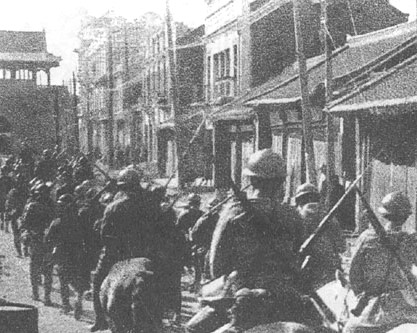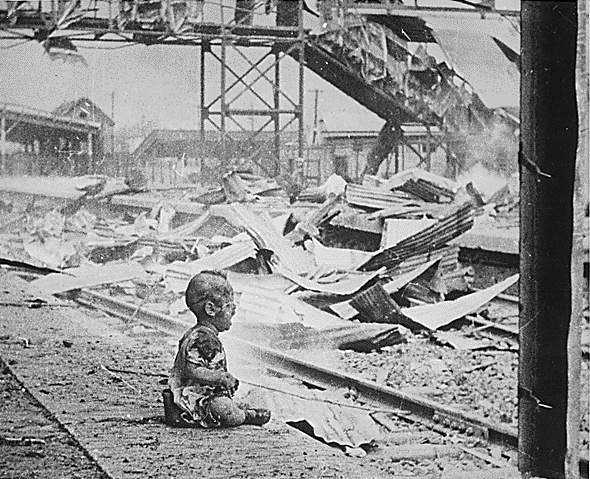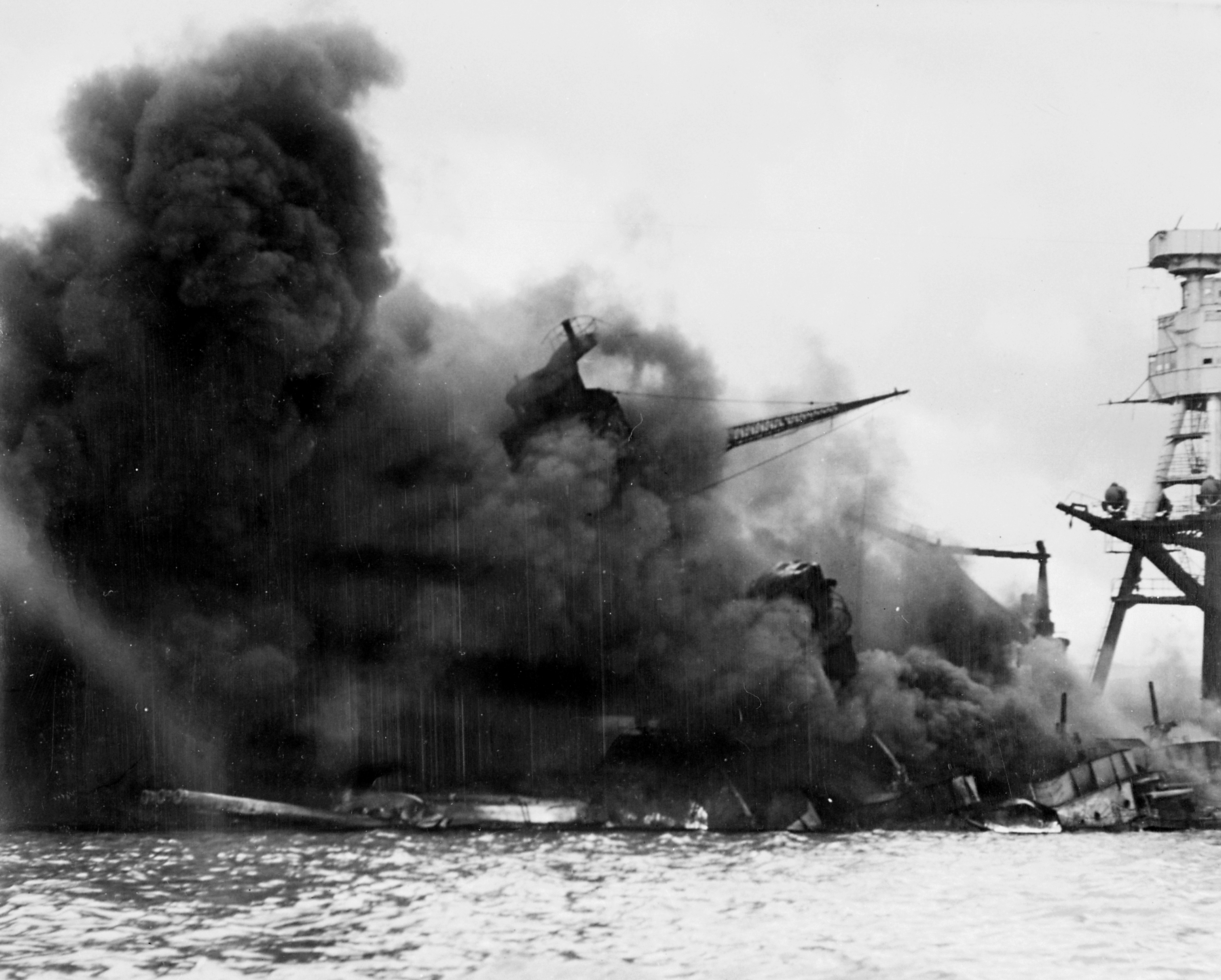The Pacific Theatre
Taught by: [Imperator]
 Sections in order
Sections in order
1. China 1931-1945
2. Pearl Harbor 1941
3. Philippines 1941-1942 & 1944
4. Dutch East Indies and New Guinea 1942-1943
5. Burma 1942-1945
6. Midway 1942
7. Guadalcanal and the Solomons 1942-1943
8. Okinawa 1945
9. Hiroshima and Nagasaki 1945
 China 1931-1945
China 1931-1945
On September 18, 1931, the Japanese blew up a section of railroad in Manchuria and blamed the Chinese, accusing them of attacking the railroad. The Japanese military used this as a pretext for an invasion of Chinese controlled Manchuria. On September 19, 500 Japanese troops attacked the Chinese garrison of 7000 at Mukden and routed them. The Japanese Kwantung Army of 11,000 men then proceeded to occupy the rest of Manchuria without orders from the Japanese government to due so. Due to the Chinese government's desicion to follow a nonresistance policy, Japanese forces conquered Manchuria with ease. China was unable to fight Japan effectively because of multiple internal issues such as communist revolts and a major humanitarian disaster caused by the flooding of the Yangtze River. By February 1932, Japan was in complete control of Manchuria. The Chinese asked for outside help and in October of 1931, the League of Nations demanded Japan withdraw but the Japanese rebuked the order. In March of 1933, Japan left the League. The Mukden Incident was to be only the beginning of multiple wars between China and Japan that would last until the end of World War II.
 Japanese troops in Manchuria after the Mukden Incident.
Japanese troops in Manchuria after the Mukden Incident.
On July 7, 1937, a skirmish on the Marco Polo Bridge south of Bejing between Japanese and Chinese forces touched off the Second Sino-Japanese War.
 A child cries in Shanghai during 1937 following a Japanese bombing run.
A child cries in Shanghai during 1937 following a Japanese bombing run.
 Pearl Harbor 1941
Pearl Harbor 1941
As tensions between the U.S. and Japan grew over Japanese aggression in the far east, the Japanese Empire put the finishing touches on its plan to launch a surprise attack on the American Navy based at Pearl Harbor on the Hawaiian Islands. Admiral Yamamoto was to command the attack force yet did not support it as he believed it would be the undoing of Japan by bringing America into the war. In late November 1941, six Japanese carriers left with over 400 aircraft from northern Japan and headed for Pearl Harbor and the Hawaiian Islands. The plan was for the aircraft carriers to launch their aircraft once close enough to Hawaii for them to bomb airfields, supply dumps, hangers, and Navy ships. Most important to the Japanese, however, were none of those targets but rather the only three aircraft carriers the U.S. possessed. If they could manage to sink these aircraft carriers, the American war effort in the Pacific would be so badly crippled as to make war nearly impossible. Yet with a stroke of good luck, the American aircraft carriers were not at Pearl Harbor at the time of the attack but were out at sea doing training excercises. Nether the less, the Japanese attack would be "remembered in infamy"...
In the few hours before dawn broke on December 7th, 1941, while the carriers moved into their final aircraft launch positions for their attack, several Japanese submarines surfaced a few miles from the entrance to Pearl Harbor. These submarines were carrying "midget submarines". The Japanese "midgets" were two person subs that were small enough that at least on paper they should be capable of entering the shallow waters of Pearl Harbor. The subs' mission was to enter the harbor, fire all four of their torpedos at American ships, then board an enemy ship and go on a suicide rampage to kill as many Americans on board as possible.
 Japanese fighters prepare to take off for Pearl Harbor.
Japanese fighters prepare to take off for Pearl Harbor.
 The USS Arizona burns after the Japanese attack.
The USS Arizona burns after the Japanese attack.
 Philippines 1941-1942 & 1944
Philippines 1941-1942 & 1944
Blah
 Dutch East Indies and New Guinea 1942-1943
Dutch East Indies and New Guinea 1942-1943
Blah
 Burma 1942-1945
Burma 1942-1945
Blah
 Midway 1942
Midway 1942
 U.S. dive bombers in the Battle of Midway.
<img400:http://upload.wikimedia.org/wikipedia/commons/3/39/Sinking_of_japanese_cruiser_Mikuma_6_june_1942.jpg
U.S. dive bombers in the Battle of Midway.
<img400:http://upload.wikimedia.org/wikipedia/commons/3/39/Sinking_of_japanese_cruiser_Mikuma_6_june_1942.jpg
</center>
<center>Japanese cruiser Mikuma before sinking.
 Guadalcanal and the Solomons 1942-1943
Guadalcanal and the Solomons 1942-1943
 The USS Wasp burns after being hit by Japenese torpedos.
The USS Wasp burns after being hit by Japenese torpedos.
 Iwo Jima and Okinawa 1945
Iwo Jima and Okinawa 1945
 U.S. troops raise the American flag over Iwo Jima.
U.S. troops raise the American flag over Iwo Jima.
 Hiroshima and Nagasaki 1945
Hiroshima and Nagasaki 1945
 Column of smoke from the atomic bomb over Nagasaki on August 8, 1945.
Column of smoke from the atomic bomb over Nagasaki on August 8, 1945.
 Back to History of World War II or History or Elftown Academy
Back to History of World War II or History or Elftown Academy

 Stumble!
Stumble!



















